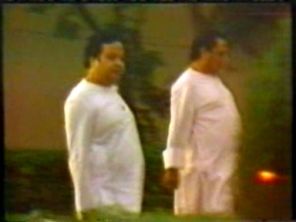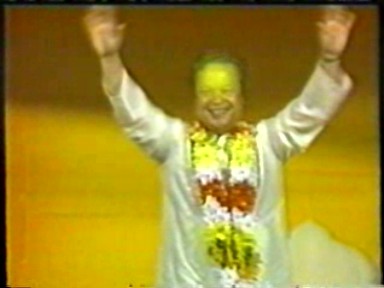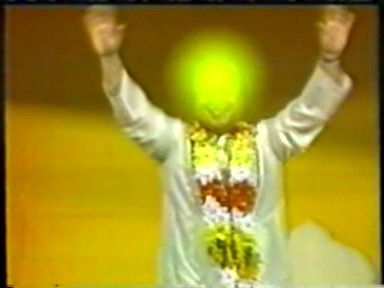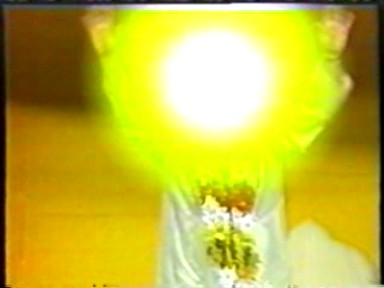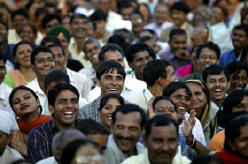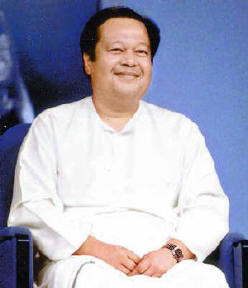Promotion of Prem Rawat in India by Raj Vidya Kender
The Divine Light Mission created by followers of Hans Rawat was Prem Rawat's first promotional base; DLM India provided the infrastructure for the events at which Rawat spoke in the years following his father's death, prior to Rawat's move westward. Subsequently the Divine United Organisation, recently renamed Raj Vidya Kender, became Rawat's Indian base. While RVK continues to promote Prem Rawat in India, it is notable that the funding of charitable activities held in concert with Events attended by Rawat in India, is claimed by the US based The Prem Rawat Foundation, and that TPRF also controls Public Relations relating to Rawat's Indian Events.
The promotion of Prem Rawat in India falls into two chronologically distinct phases with the East/West schism in the organisation, following the Indian administrators being outraged by his rebellious teenage drug abuse and scandalous behaviour for a supposed Satguru, providing the point of change. The creation of the wildly unrealistic Divine United Organization in 1973 had created the shell of an organisation that was available to use after Rawat's mother retained control of the Indian Divine Light Mission.
The precise chronology of the development of Divine Light Mission as a vehicle for Prem Rawat's father is unclear, Hans Rawat had attained a following from 1930 onwards and by 1944 had established a base on the Ganges near Haridwar which was to become the Prem Nagar Ashram now part of Satpal Maharaj's Manav Dharam. The Ashram was developed during the 1950s but the Divine Light Mission only came into existence in 1960, when it was registered as a Society with the Indian Government. Prem Rawat has reportedly claimed that his father hated the organisation although as Prem Rawat was only eight years old and the organisation had only been in existence for six years when Hans Rawat died the basis for this claim is tenuous. Certainly a degree of bureaucracy had been created allowing individuals other than the Rawat family to have a role, a book published by DLM in 1970 featured a commentary by C. L. Tandon, the then DLM President.
The role of the DLM organisation has been obscured by the mythologies that grew up around the death of Prem Rawat's father in 1966 and Prem Rawat's promotion at aged just eight years old to become his father's successor as 'Guru'. One of the more confusing aspects has been the frequent reference to Prem Rawat as being "head of the Mission", he may indeed have been its nominal 'spiritual' head but the degree to which Prem Rawat ever had actual influence over the Indian organisation was clearly limited by the interventions of a number of adults, not least his own mother.
By 1970 Divine Light Mission was developing a moral and practical direction in addition to its spiritual purpose, most directly this could be seen in the creation of the WPC - World Peace Corps. The purpose of the WPC seems to have been based on the US volunteer organisation The Peace Corps and the conception was that the Mission's followers, having improved themselves with meditation, would sign up to carry out good works amongst the poor and needy of India. Additionally the somewhat militaristic structure of the WPC saw it also take on a 'security' role within Divine Light Mission. The WPC in India does not seem to have survived beyond the Rawat family schism however Prem Rawat's older brother Satpal Maharaj has continued to mirror this earlier organisational model with his Manav Utthan Sewa Samiti organization which has a range of charitable objectives and which is supported by the Manav Sewa Dal, a uniformed group of 'volunteers'.
World Peace Corps organisations also operated in conjunction with the Western DLM's, these had only a tenuous relationship with the Indian WPC and had no commitments to a wider charitable purpose. For a short time prior to the rift in the Rawat family, Prem Rawat's brother Raja Ji was nominally in control of all the WPC organisations but there is no evidence of the development of any kind of common ethos or purpose and many followers of the time attest to the 'national' WPC's having become almost rival organisations to the western DLMs. By the mid 1970s, and in marked contrast to both the earlier Divine Light Mission and the organisations subsequently controlled by Satpal Maharaj, all reference to a wider charitable purpose was absent from all of the organisations promoting Prem Rawat.
In 1973 Prem Rawat announced the creation of a new organization in Delhi to be called Divine United Organization, or DUO and a Society of this name with an address in Delhi was registered with the Indian Government. From the outset, the conception of DUO seems to have been wildly unrealistic and that it would be both business driven, philanthropic and multinational, with Delhi being the base for a plethora of businesses employing Prem Rawat's followers. Although the DUO name came to be attached to various small companies operating in the US and UK, none of these were legally connected to the Indian organisation. Following Prem Rawat's marriage in 1974 and his acquisition of US citizenship, the locus of promotional activity transferred almost entirely to the US.
Since 1974 DUO has remained the primary promotional entity for Prem Rawat in India. The organisation was renamed and is now known as Raj Vidya Kender, the name of its Delhi ashram. The operation of DUO/RVK follows a model not dissimilar to that of the earlier Divine Light Mission, Prem Rawat is still referred to as Guru Maharaj Ji and the religious content remains almost unchanged from thirty years ago, although the public demonstration of this is more restrained. Nevertheless this religious aspect is in direct contradiction to the public face presented by Prem Rawat's promotional organisations operating outside of India.
DUO/RVK is registered as a Society under Indian Law, while this does allow it to operate as having philanthropic purpose, little regulatory oversight is provided and the system of closed membership employed in other Prem Rawat promoting organisations also applies to DUO/RVK.

